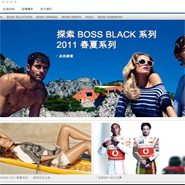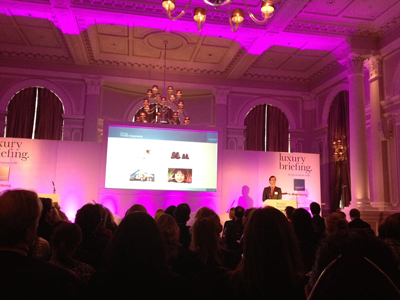
By Kayla Hutzler
LONDON -- Luxury brand marketers need to stop thinking of the affluent population as one group and try to understand the different cultural aspects, lifestyles and spending habits at play within the various levels of the world's wealthy, according to a presentation by Ledbury Research at the Luxury Briefing Wealth Summit 2011.
The areas of the world in which the wealthiest individuals reside is changing dramatically and brands need to plan their marketing campaigns and retail stores accordingly. Indeed, to make these geographical changes, brands also need to understand who the wealthy people in these countries are and why they spend.
“If you look at the total numbers of millionaires globally, in 2007 and 2011 they are about the same,” said James Lawson, founder and director of Ledbury Research, London.
“Obviously, for those who have lived through the past four years, a lot has changed," he said. "But in terms of wealth landscape, we are back up to where we were four or five years ago.
“Where we expect to get to is a more difficult story."
Wealth is health
In 2007, the three biggest areas in terms of the number of wealthy individuals were the United States, Western Europe and Asia-Pacific.
Since then, there has been a big reduction in the number of millionaires in Western Europe. Currently, about 28 percent of millionaires live in Europe.
In the future, Asia-Pacific will start to take a larger share of where the wealthy population is based, according to Mr. Lawson.
Ledbury felt that there are many different ways to determine where the wealthy are spending in Britain.
For example, the research group broke the topic down into where real estate investments of more than $1.61 million -- £1 million -- are being made. They found that London was the city where a majority of these personal investments were made.
Additionally, Ledbury looked at where the most luxury brand retail stores were located in Britain. Once again, it found that it was London.
By comparing these types of studies to more traditional studies about income, Ledbury is able to make a few suggestions for luxury marketers.
“As you start to compare demand and supply and you get the fact that your retail store is in Wales, you may want to rethink that," Mr. Lawson. "In Wales, you have many more luxury stores than you do number of wealthy people.
“There is much more opportunity in terms of London in the Southeast and Southwest,” he said. “It is a very basic way of looking at where wealth is distributed, but there is information out there you can use by proxy to work out where the opportunities are.”

Friends with benefits
"Wealthy" is a dangerous term to use, because the affluent are in fact very different and can be highly segmented, according to Mr. Lawson.
In the United Arab Emirates, there are two ways to segment the wealthy individuals and both groups are relatively new to wealth.
The first can be referred to as the founding fathers. They are generally older than 45 and they are first-generation wealth in the region. In light of this, they are respectful, humble, cautious and suspicious of western brands.
On the other hand, the next generation of enterprising sons spends spontaneously and passionately.
Most of the consumers in this latter group are educated overseas and westernized in terms of style and recreation.
Russia, meanwhile, is much more complex and is broken down into three different segments.
The first is the friends of the state. These individuals have strong links to the communist party and generate much of their wealth by pre- and exclusive-access to deals. They are extremely confident individuals and, as a result, buy brands for status.
The second group is the smart operators, who are more liberal. They tend to be involved in new businesses such as media and they apply the liberal nature to their spending their habits.
The third spending group is capital heirs. These people are well-educated and tend to have gone to U.S., British and Swiss schools.
These younger consumers are going to inherit a large amount of wealth, and are nervous and edgy as to what is going to happen next.
Due to the large size of China, there are four wealth segments to consider in the area.
The Guanxi are connected to people in the government and get prior access to deals. They have many cars, but they are careful about displaying their wealth because if they are too ostentatious, it will reflect badly on their connections.
Then there are the maverick entrepreneurs who are very optimistic about the economy and are spending enthusiastically. They buy luxury goods ostentatiously.
Next up are the ambitious successors who are most excited about new businesses and will likey account for a majority of luxury spending in the future.
Interestingly, China is the only emerging market to have a noticeable female wealth segment.
Ledbury referred to them as the modern matriachs and they often influence spending decisions in families or work independently.
“There will be ups and downs, more downs then ups over the next few months and year or two,” Mr. Lawson said.
“The first thing is to think about your marketplace and avoid the trap of talking about the wealthy as one population too much,” he said.“The group is large, and I encourage you do think of them as many different segments.
“There are pockets, even in Britain, where wealthy is poorly misunderstand and can be segmented better.”


